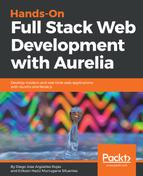In user experience testing, actual end users (or user representatives) evaluate an application for its ease of use, visual appearance, and ability to meet their needs. The users will explore all the applications in an isolated environment called UAT, which can be configured in a local server or some cloud provider. You must keep in mind that it does not matter where the product is deployed, it should represent the same conditions as your production environment.
Don’t confuse user experience testing (UX) with user acceptance testing (UAT). UAT is a testing level that verifies that a given application meets demanded requirements focusing only on business use cases. For example, in UAT, you can ensure that your Retrieve Teams button works correctly and returns the correct data well formatted. So, it's not enough? Of course no, because you don't know yet whether your button is well placed or whether it's difficult to find from the end user's perspective.
Okay, now that we understand how this kind of testing works, which one should we apply? All taken decisions regarding testing should target to maximize the value of the product for its final users, even by detecting bugs or unexpected features, and by ensuring functionality and usability. To achieve this goal, in real-time situations, we will need a combination of all different test techniques reviewed at this time.
